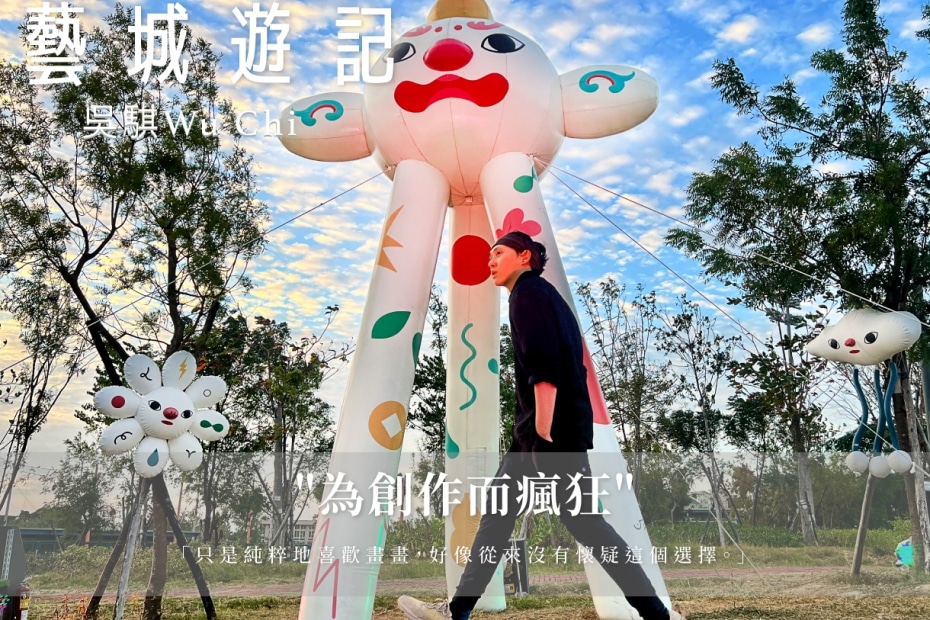In the thriving creative industry of Taiwan, many emerging illustrators emerge each year. Among them is Wu Qi, who is able to stand tall in this wave and maintain his own unique style. In this episode of “Art City Travelogue,” we take you into his high-pressure creative world.
With a tall and slender figure and a head of dark curly hair, Wu Qi, also known as 57, is like a silent figure hiding in his own planet. When it comes to creativity, however, he becomes talkative and unstoppable. Wu Qi’s fantasy world extends from canvas to the exterior walls of buildings, basketball courts, and his works can be found all over Taiwan, especially in his hometown of Kinmen. He also crosses different mediums, creating ceramic sculptures and large-scale art installations. In recent years, his works have been seen in both commercial and public spaces, from the street corner transformation project in Taipei’s Wanhua District, to the Tainan Blue Dye Cultural and Creative Park, the Kinmen Ocean Art Festival, and the painted basketball court featuring the Wind Lion God. He has even traveled overseas to Shanghai’s Qibao Baolong City to create large-scale murals and birdman swings. At the beginning of this year, at the 34th Taiwan Lantern Festival in Taipei, he created three sets of giant lanterns called the “Forest Spirit Series” using elements of clouds, wood, water, light, wind, and earth, once again stunning the art world.
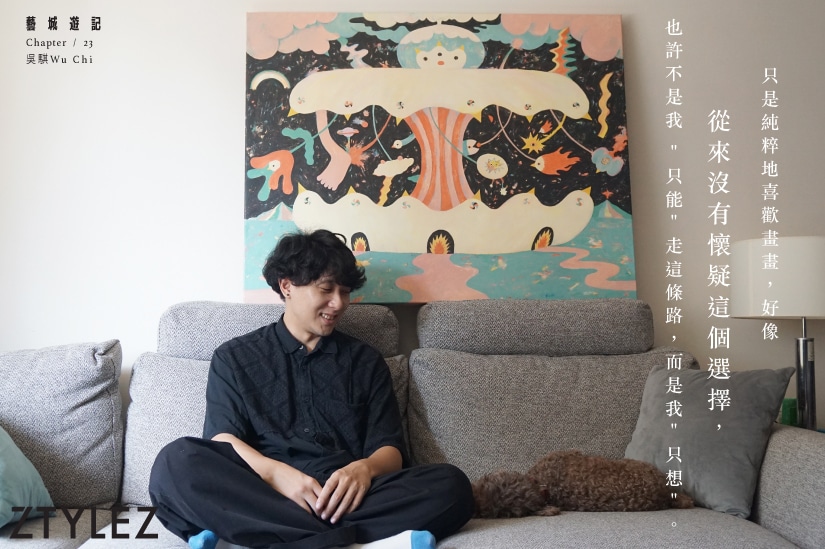
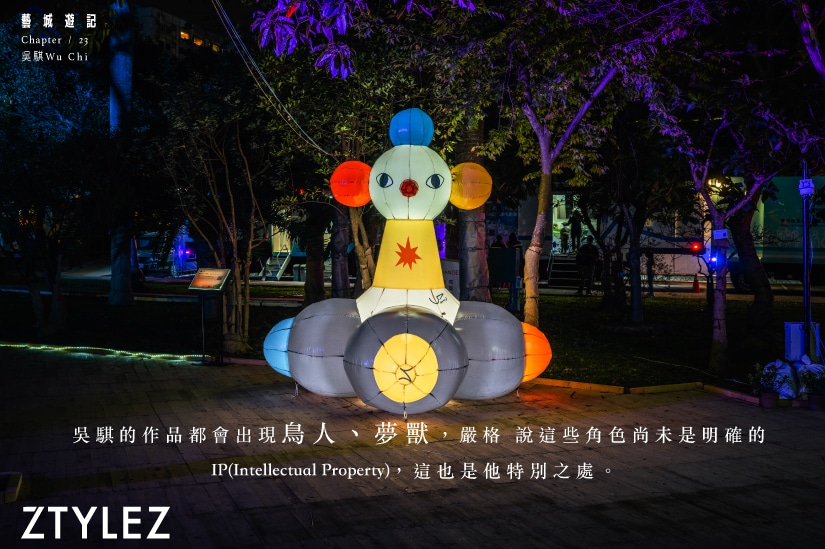

This passionate and determined Scorpio continues to pursue a creative path despite being constantly challenged. They also encourage their artist father and siblings to join the world of art. Despite their rebellious appearance, they are more disciplined and serious than anyone else, never wasting time. They strive to find a balance between conformity and individuality, and their creations of bird people, dream beasts, and Picasso are a reflection of their scrutiny of this crazy world. Each artwork is a self-expression.
“Just purely love painting.”
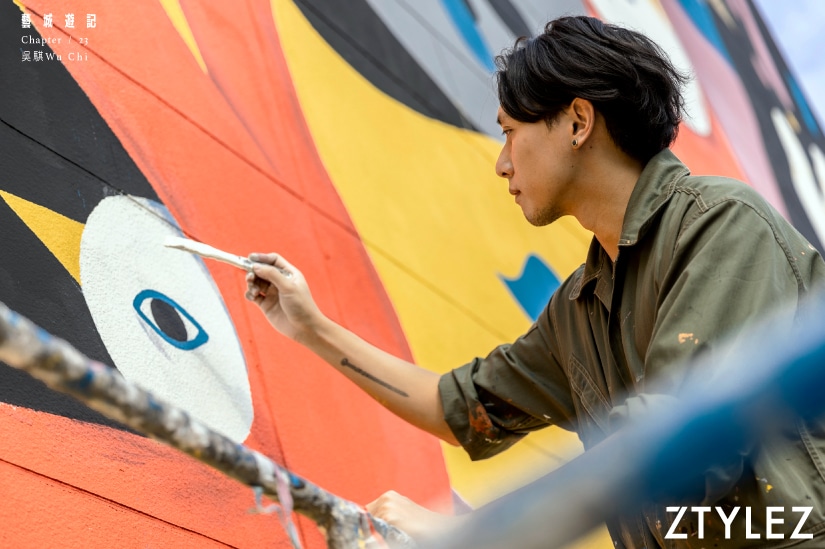
Wu Qi’s studio is located in a room in his home in Taipei, a high-rise building with a view of the skyline. The outside world and the indoor time seem to exist in parallel, and Wu Qi, who is constantly engaged in creation, has ambitions beyond this stage. From his annual works review on his social media platform, one can see his astonishing output. He jokingly says that his hands can’t keep up with the speed of his inspiration. Behind his humor is his understanding that opportunities don’t wait for anyone, and only by working harder can one make it to the stage of success. He recalls a period of low point in the past: “Around 2017, I went through a few years of darkness, to the point where my body and mind almost collapsed. Later, I created a series of 11 black and white works called ‘Silent Comedy’. With the last stroke, my mood relaxed. I am a Scorpio who holds grudges, but I use painting to lighten the pain. Bad experiences make me more determined to achieve my goals, to become stronger!” Defeats can make people shrink, but they can also make people stronger. Wu Qi’s personality of becoming stronger in the face of setbacks may have been cultivated during his time at Fu Xing School.
Further reading:
- Andy Lau’s First Art Exhibition! Collaborating with Multiple Contemporary Artists to Create “1/X Andy Lau’s Art Space”
- Netflix, Disney + September series recommendations! Highly anticipated Korean version of “Crash Landing on You”, and Ji Chang-wook’s new work “Bad Guys: Vile City”
- WOAW Gallery’s new gallery space in Wan Chai opens with a dual exhibition featuring artists Taedong Lee and Kitty Ng!
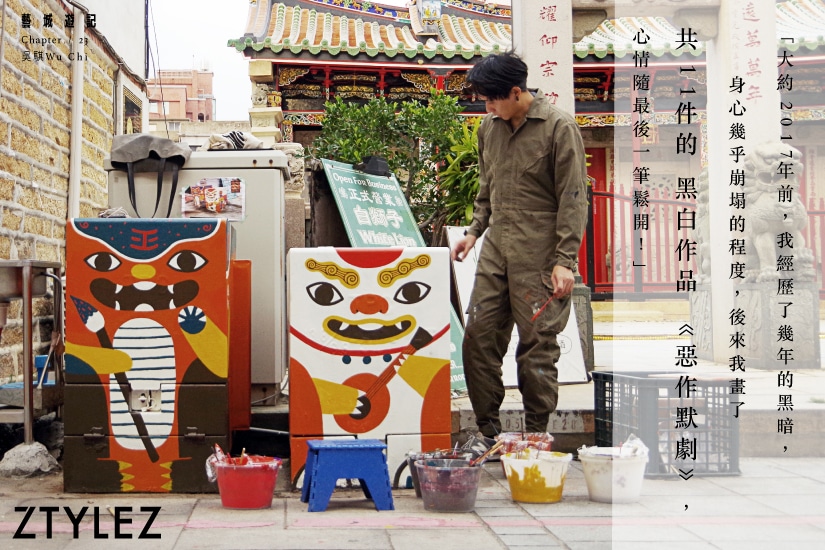
Growing up in Kinmen, Wu Qi always drew during class, from Ninja Turtles to Blue Waves, until he came to a high school in Taipei that specializes in cultivating aesthetic professionals: Fuxing Vocational High School (officially known as Private Fuxing Senior Commercial and Industrial Vocational School). The colorful kingdom he painted freely crumbled upon entering the systematic aesthetic education system. The moment he stepped from an outlying island into Taipei seemed like opening the door to the world. Wu Qi said, “Fuxing in Taipei is a completely different world, and it was a huge blow to me. In my first year of high school, the teachers even asked me to transfer to another department or transfer to another school. The art teacher gave me failing grades.” At that time, Wu Qi’s older brother was also a student in the art class at Fuxing. They were only one grade apart, and his brother, who was also under immense academic pressure, had to cram in cram schools. Faced with a series of rejections, Wu Qi did not choose to give up, but instead showed astonishing perseverance. He often handed in several times the amount of work as others, just to get a satisfactory score.
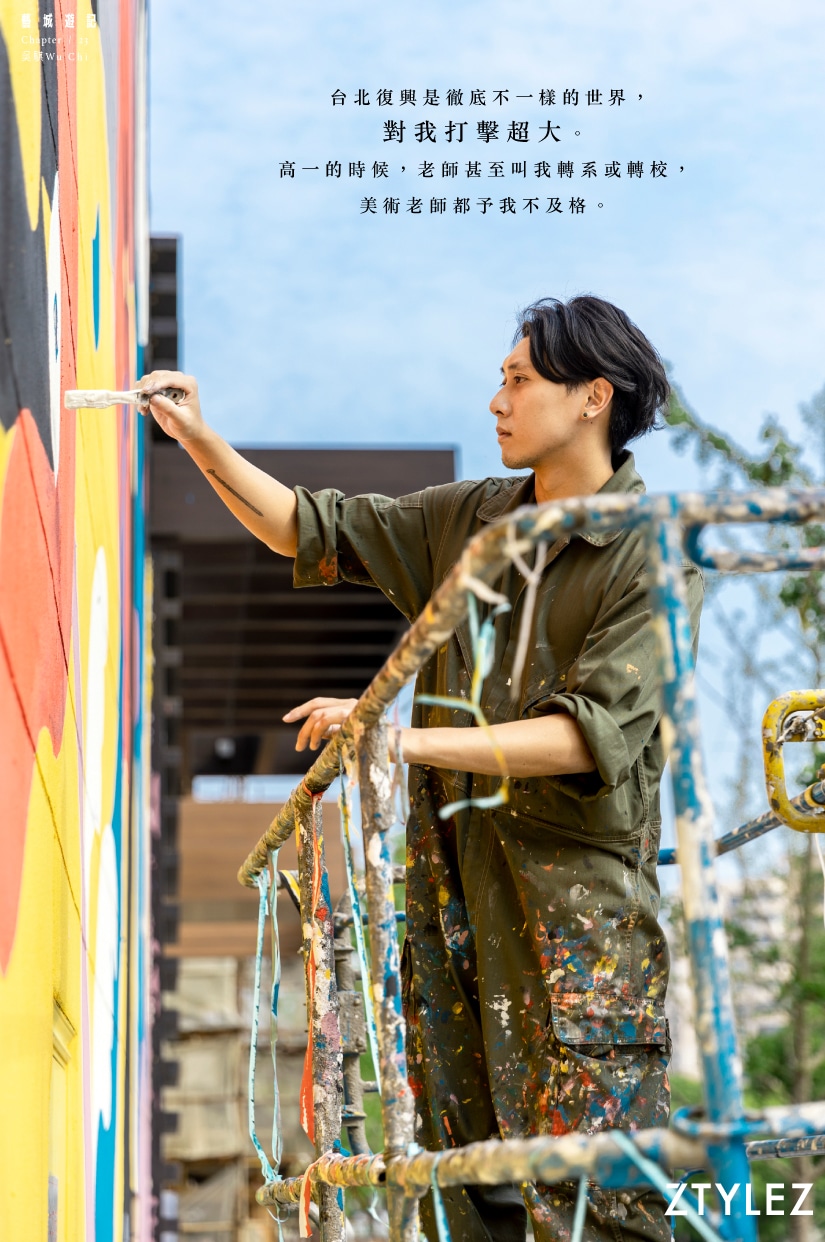
Looking back at the high-pressure environment of revival, for Wu Qi, it is a source of stimulating inspiration. He thinks to himself, “I can find the energy I want in pressure. In other words, pressure is a good thing for me. Pressure can stimulate me and become the driving force for creation, as well as push me to overcome my shortcomings.” When it comes to creation, the words cannot hide the burning passion. The ability to persist without being defeated stems from a pure love for painting. He says, “I simply love painting, as if I have never doubted this choice. Maybe it’s not that I ‘can only’ take this path, but that I ‘only want to’.” The straightforward and unwavering original intention is also the driving force behind his persistence.
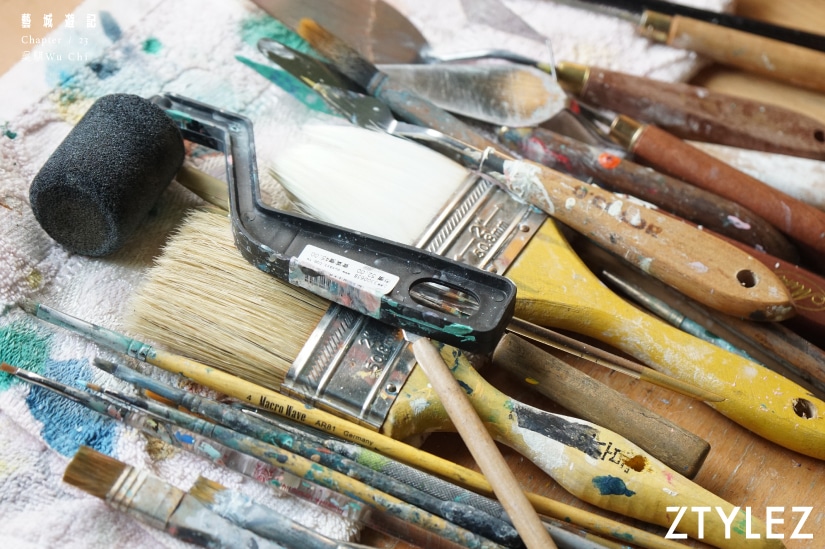
“Art and business require appropriate compromise!”
For Wu Qi, the three years of revival are just the beginning, and his painting skills and ideas are still in the stage of enlightenment. Tracing back to the true starting point of his creation, it was when he entered the National Taiwan University of Arts, and he firmly said, “University is a very important turning point, probably giving me a sense of enlightenment in creation, both in terms of ideas and development.” The perfect aesthetic education gave him a clearer direction for his creation, which is illustration art. At that time, Jimmy was popular in the Taiwanese illustration industry, and almost all projects required him to imitate Jimmy. Being eroded by the mainstream, he once again pushed himself to a dead end to stimulate his creative nutrients. He said, “I decided to find my own style! So I secluded myself for half a year, forcing myself to look at 10 works every day, then draw one picture and stick it on the wall, and also learn one new thing every day. I will keep drawing things I like until they can be transformed into my own elements. After half a year, I finished a piece called ‘Cubism,’ and at that moment, I had a sudden inspiration and felt that this is my style.”
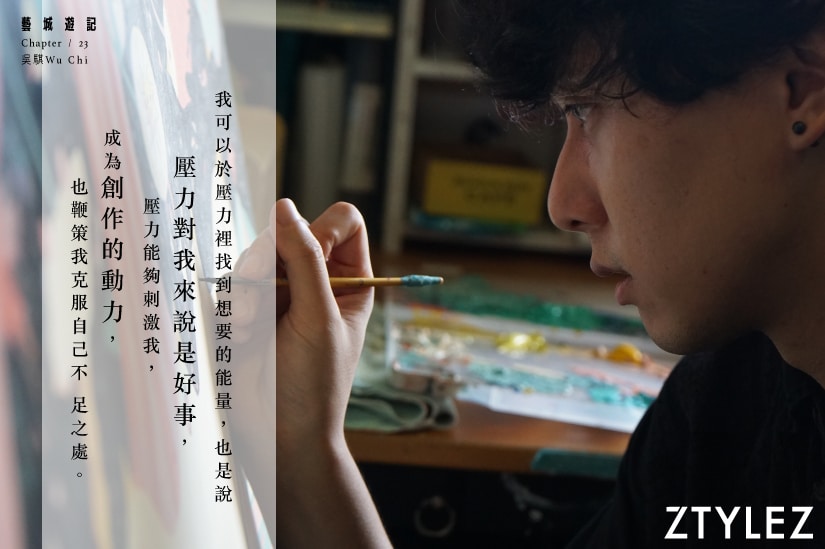
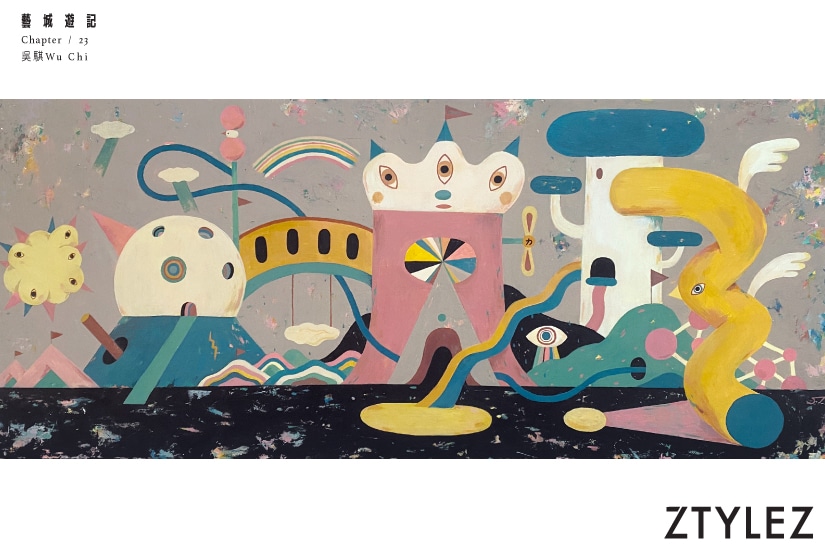
“I always force myself to do something with my paintings.”
Walking through the difficult path of creation with a posture that could kill oneself, because Wu Qi sees through his own weaknesses. He said, “I have always been a person with very little self-confidence. Many things require me to talk to myself, and I have to set clear goals at each stage to force myself, otherwise I can’t do it. My paintings are always forcing myself to do something.” Everything has two sides, many people fear pressure, but some people can transform it into strength.
“Every collaboration must allow oneself to learn new knowledge or skills.”
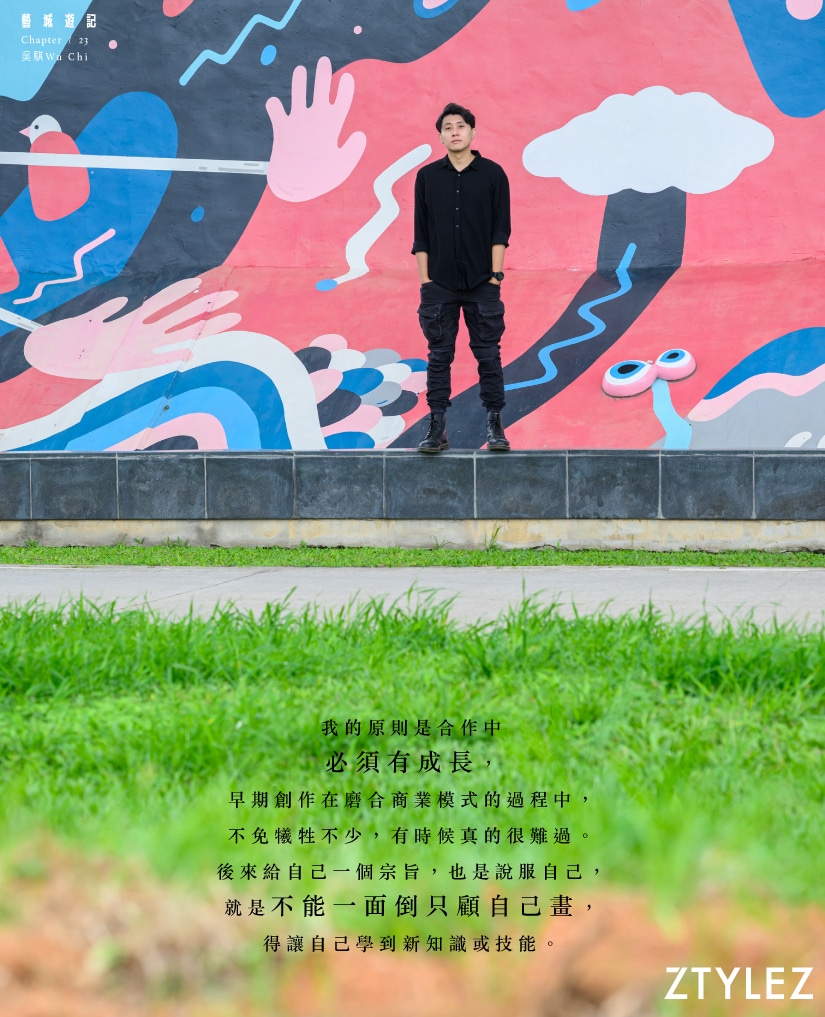
To maintain the possibility of artistic creation within a business model is another difficult challenge. Wu Qi, after going through the process of adaptation and compromise, shared: “In the early stages of creation, there were inevitably many sacrifices made in the process of adapting to the business model, and sometimes it was really difficult. Later on, I gave myself a principle, or rather convinced myself, that I couldn’t just focus on enjoying my own art. My principle is that there must be growth in collaboration, allowing myself to learn new knowledge or skills. For example, in a previous project called ‘European Phantom,’ I made 16 color changes alone, which ultimately taught me how to use blue. But the only thing that matters is that you must like the final product!” Being overly insistent can easily lead to being closed-minded, while compromising completely can result in losing one’s personal style. Wu Qi’s ability to navigate between art and business is the result of enduring a 17-year journey full of challenges and obstacles.
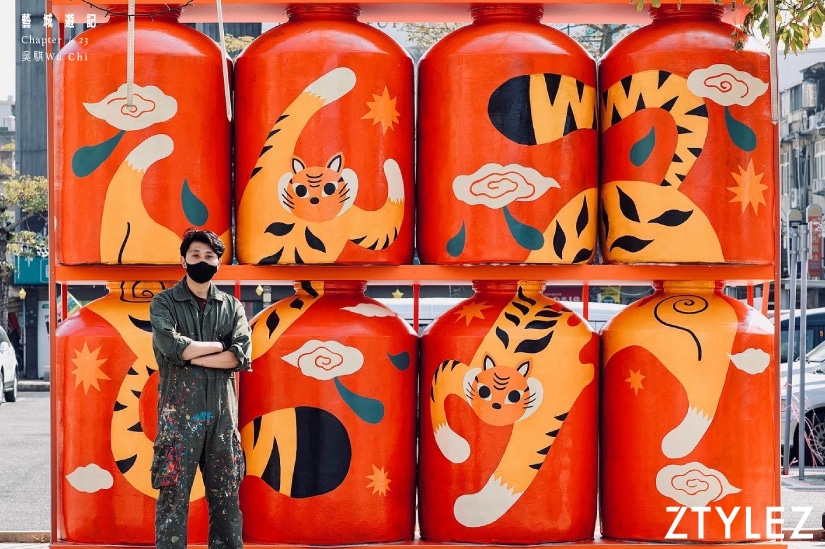

“Our contemporary art may now become IP art.”
Wu Qi’s works often feature bird people and dream beasts. Strictly speaking, these characters are not yet clear intellectual property (IP), which is what makes him unique. His works are not centered around a single distinct image or character, which also gives his creations a broader scope. In an era where IP characters are almost everywhere, he interprets it like this: “Just like every period has different styles and art movements, I think contemporary art today might become IP art. I respect and like it if the development of these IP characters can benefit everyone.” Coincidentally, during the interview that month, Wu Qi held a joint exhibition called “Future of Anime 2023” at the Eslite Bookstore in Taipei Songshan Cultural and Creative Park. In the process of creating for the exhibition, he decided to turn a character he created in 2017 into a clear IP: “The belief and conviction of this character has reached 100%, making it suitable to become an IP. So I decided to name this three-headed bird ‘Bika’, symbolizing freedom, thought, behavior, and money.”
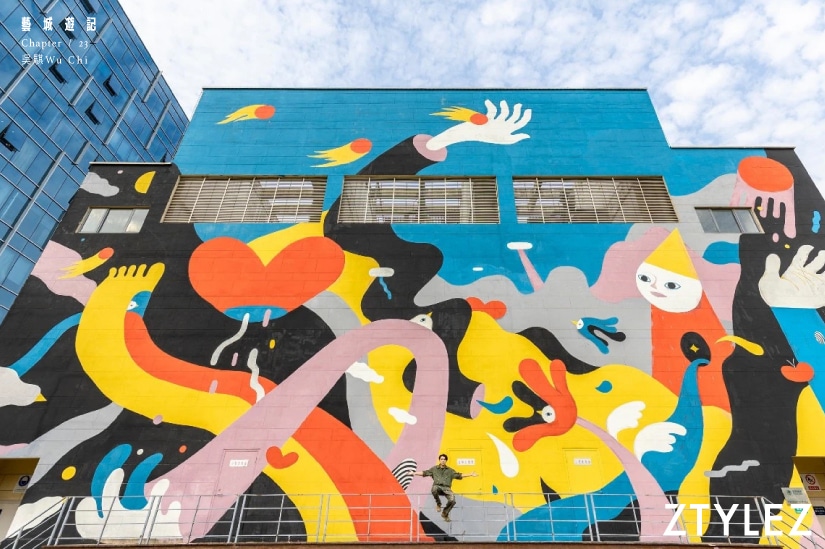

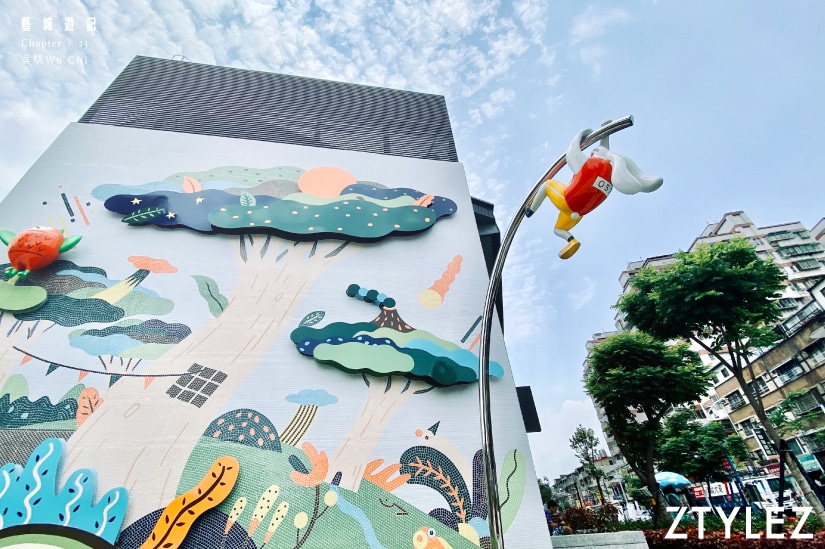
When it comes to IP art, how does Wu Qi view the development of arts and culture in Hong Kong? He sincerely says, “I really like the artistic atmosphere in Hong Kong. My brother wanted to participate in exhibition activities in Hong Kong before, and the organizers said that there must be a clear IP, which means that the development of IP characters in Hong Kong is very mature, and illustrators must have a strong IP to be seen.” Through past joint exhibition experiences, Wu Qi has come into contact with a new generation of artists in Hong Kong, such as Zoie Lam, an illustrator from Hong Kong who was interviewed in the April issue of “Art City Travelogue.” A wonderful coincidence has made them friends, and they exchange creative ideas with each other.
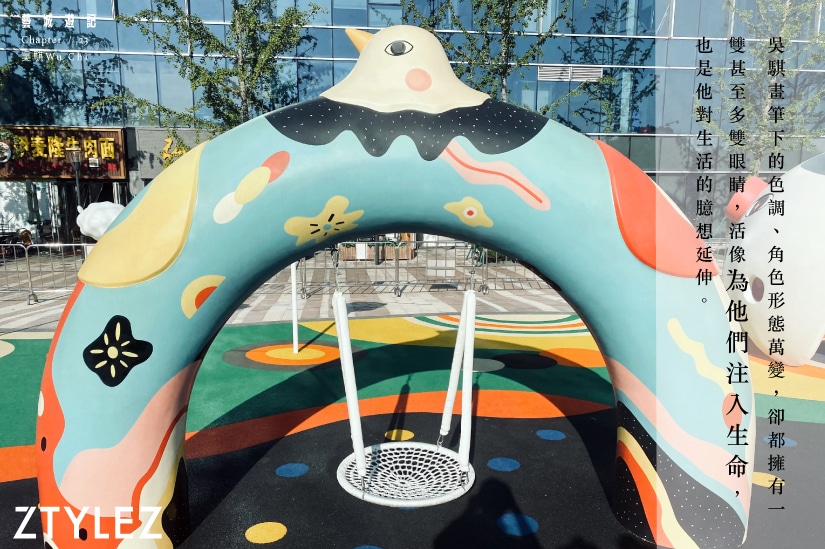
The tones and forms of characters under Wu Qi’s brush are ever-changing, but they all have one or even multiple pairs of eyes, as if injecting life into them. It is also an extension of his imagination of life. He humorously said, “When I first started creating, I forced myself to observe from life. For example, when I saw this desk lamp, I imagined that it could be a creature with legs, capable of walking. As it evolved, I couldn’t change my habit of liking to draw eyes on them. Perhaps subconsciously, I hope to transform them into things from another world through this transformation.” The characters not only have life, but also carry his emotions from different periods. For example, the birth of the birdman originated from the Japan International Birdman Championship. At that time, the scene of university students cheering and transforming into flying costumes made him envious, and he created the birdman, presenting his pursuit of freedom and decadent state at that moment.
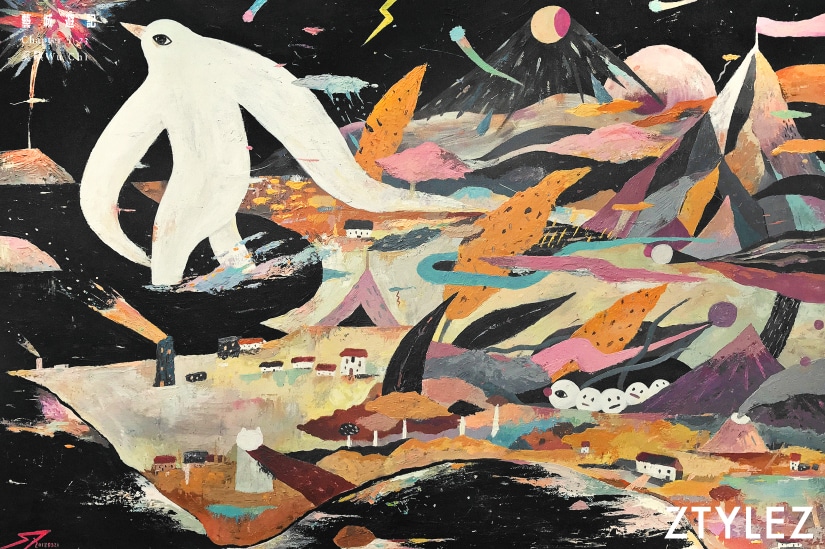
Mentioning these creative processes, he couldn’t help but make a self-deprecating remark: “I used to think that my work was a conversation with others, but in the end, it seems like my creations have become a dialogue with myself.” Nurturing the prototypes of the characters with full emotions, they have been nourished over the years until they can be turned into intellectual property. It is not easy to maintain one’s own rhythm in the mainstream of fast-paced creation. He earnestly says, “This trend can easily make creations hollow, causing creators to lose their ambition and competitiveness in creating something of their own. For example, many art graduates nowadays draw cute things to cater to the market because it’s a shortcut to making money. This leads to a pathological rush in creators and even the loss of artistic integrity. I find it quite sad.” These words go beyond mere text and serve as the foundation for all creations, as well as Wu Qi’s original intention in creating.
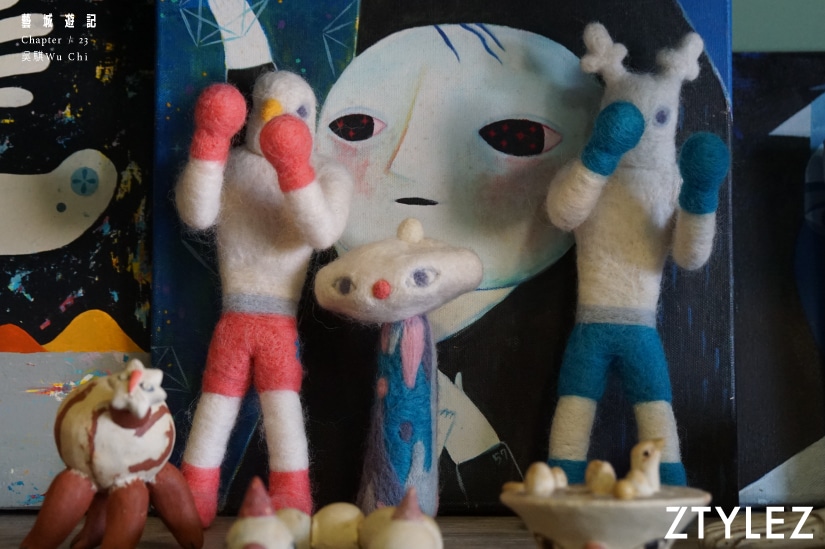
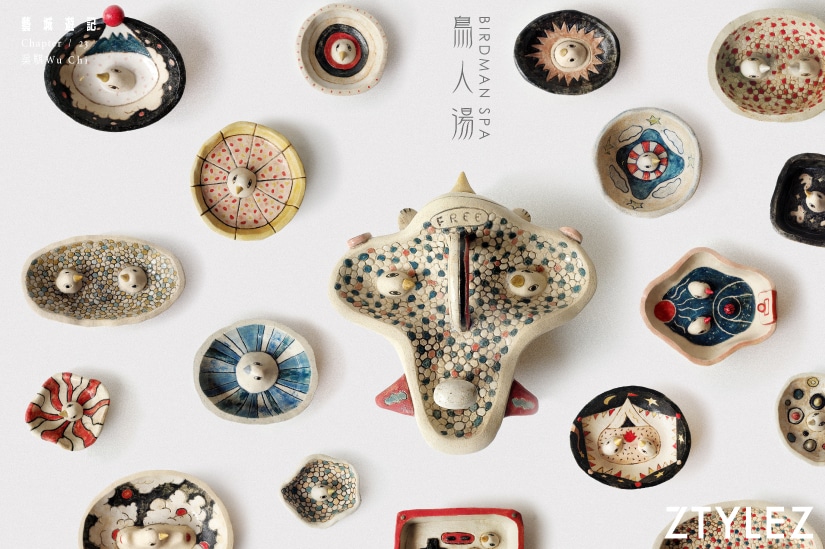
The idea of leaving behind works in the world is also one of Wu Qi’s creative pressures. He shares, “I think all creators would hope to have works left behind. If I were to discover that I haven’t left behind any works when I’m old, it would be a great pressure.” Not letting others down, and especially not letting oneself down, using pressure to plunge oneself into madness is what can stir up a fantastical paradise.
“Make Kinmen look the way I want it to, make it a little more beautiful.”
In Taipei, while being influenced by aesthetics, there is still a longing for my hometown, Kinmen. Up until now, Wu Qi has created as many as 18 large-scale works in Kinmen. Earlier, he even entered the commercial field and designed the exterior visual graphics for the only McDonald’s in Kinmen! Regarding his creations in Kinmen, he jokingly said that his idea is simple, which is to selfishly make this place more beautiful: “The environmental atmosphere in Kinmen is not conducive to artistic and cultural creations. I want to do something for Kinmen when I have the ability, and make this island a little more beautiful. Because of my identity as a Kinmenese, I have the opportunity to participate in the design of local public spaces and create a more aesthetically pleasing environment. The creative process also allows me to have a deeper understanding of my hometown and establish more connections with Kinmen.” Whether it’s the painted basketball court featuring the Wind Lion God or the street light boxes, Wu Qi took the initiative. The latter was even his own proposal. These large-scale public creations are more challenging compared to any commercial collaboration, and they are inevitably hindered by the rigid bureaucratic system. It is frustrating that colorful electrical boxes have been painted over and restored to their dull original state. What angers Wu Qi the most is the “Forest Spirit Series” giant light installations taken away by the Kinmen government, which will face destruction… Facing the local disregard for art and culture, Wu Qi regrets: “I am really angry. It seems that the more I expect, the more disappointed I am. But I will still do my best to do what I should do, until one day I hate Kinmen.”
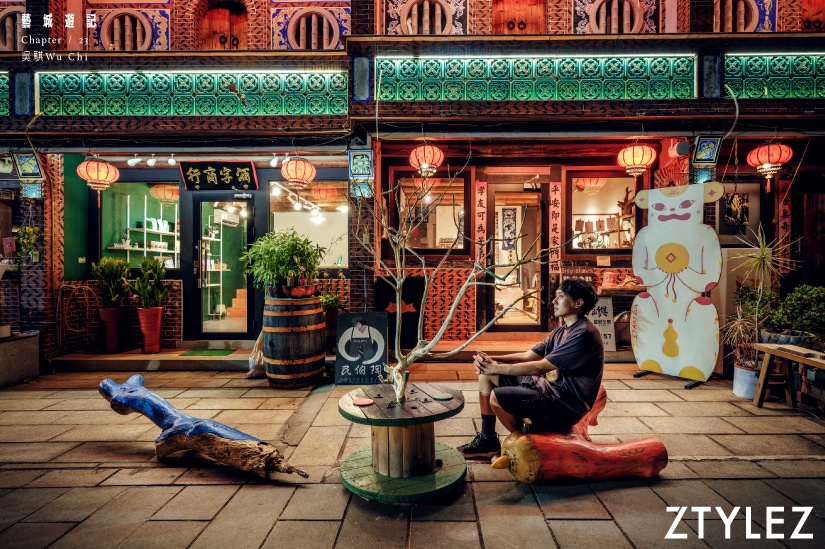
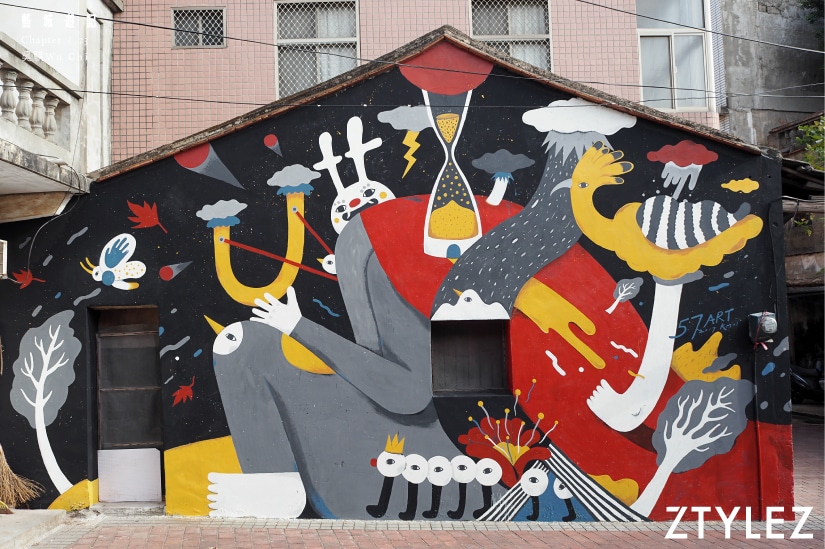
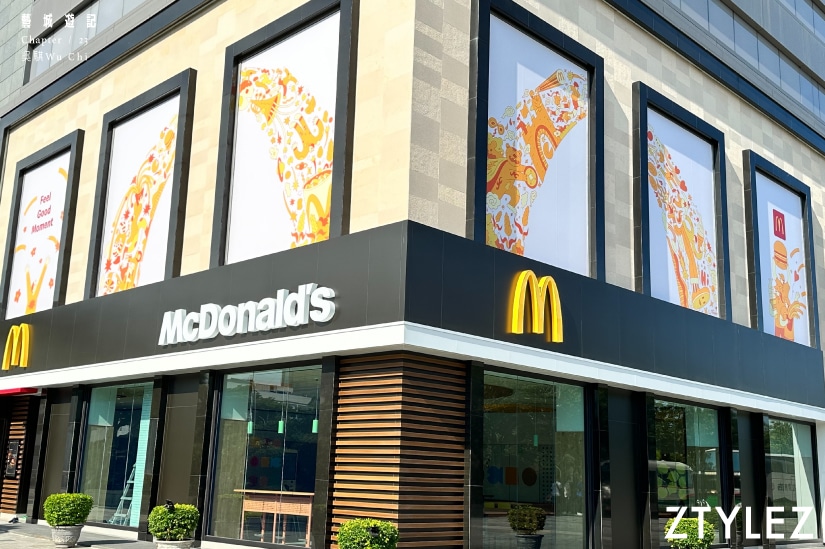
In addition to large-scale art creations in public spaces, Wu Qi and his father established the “Bird Island” studio in the Houpuxi Art and Culture Special Zone in Kinmen, a place for Wind Lion God cultural and creative products and ceramic cultural and creative products. He shared the original intention of establishing Bird Island: “Kinmen is the home of birds. Birds that hatch from eggs will fly out and practice outside. After achieving something, they will bring back nutrients to this Bird Island, forming a good cycle. This is also the meaning behind my first mural in Kinmen, ‘Dreaming Back to Golden Sands’.” This tireless birdman constantly gives back to his hometown with beauty, even if his hometown has yet to appreciate the dedication of returning youth…
Producer: Mimi Kong
Interview & text: Kary Poon
Photographer: Wei
Video Edit: Kason Tam
Producer: Mimi Kong
Interview & text: Kary Poon
Photographer: Wei
Video Edit: Kason Tam

